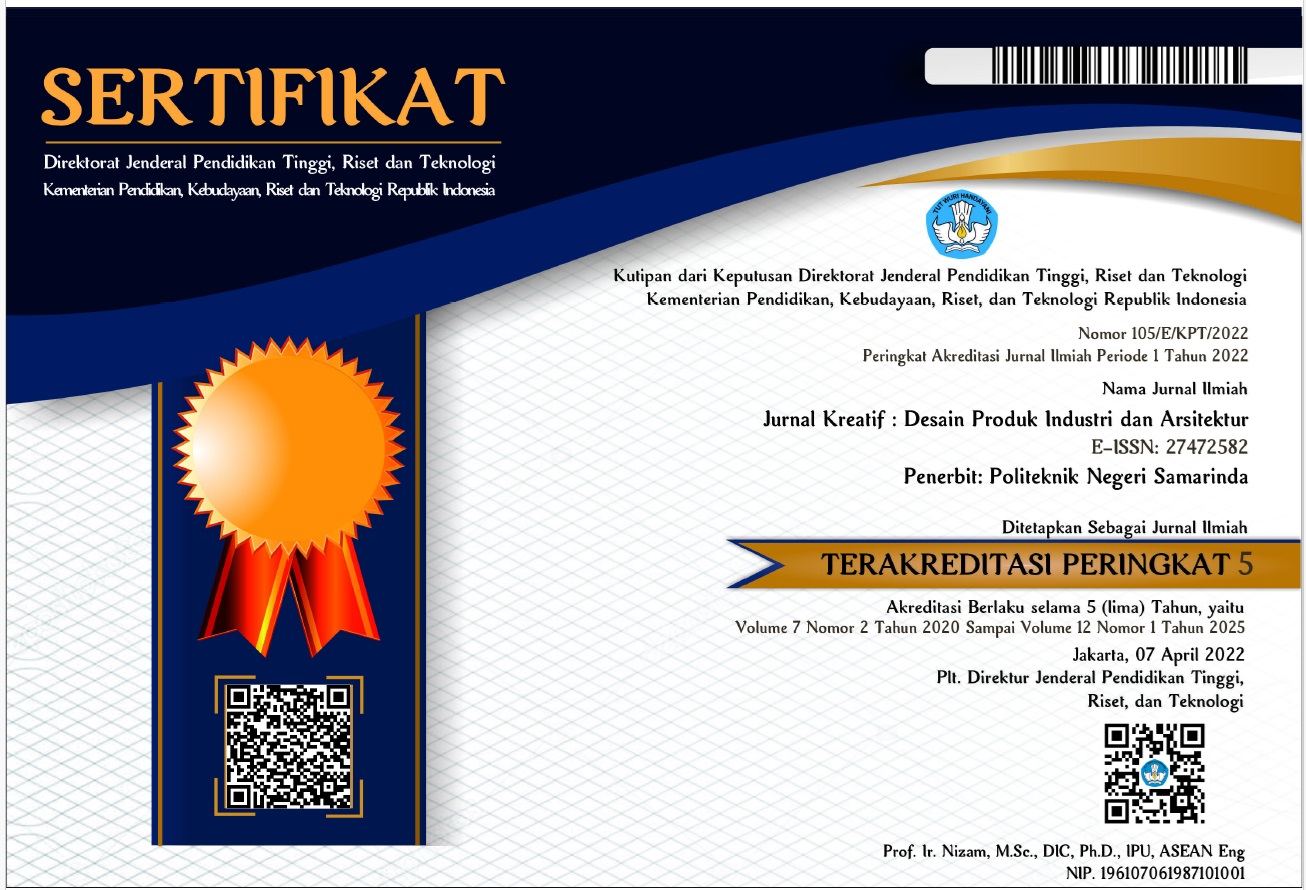DESAIN PERMAINAN 3D PUZZLE DENGAN BENTUK HEWAN KHAS KALIMANTAN
 Abstract views: 827
,
Abstract views: 827
,
 pdf downloads: 690
pdf downloads: 690
Abstract
Game is a children’s growth and development activities that create a sense of joy and pleasure, also can become a place to channel the feelings that exist in the children. In design this product there are problems that must to be solved like how to make 3D puzzle by bringing the theme of native animals from Borneo that suitable to the standard of terms making Educational Game Tools, with a level of difficulty that is able to be understood by children. 3D puzzle games with native animals from Borneo shape has created with the intention of children can be expected to have skills in problem solving, reasoning, and understanding the pictures or shapes from the puzzle arrangements. The design methodology that used on the product is the methodology that developed by Vinod Goel (1995) which divided into 3 stages such as preliminary design, design development, and final design & development. Results from the design analysis obtained, the authors use laser techniques to simplify the manufacturing process and the materials that has light weight light, resistant to water, also made according to the standard of making product Educational Game Tools in order to make a safe games, that suitable for the age of the children, easily to fit separate pieces together, and follow the children's anthropometric tables based on survey results. The 3D puzzle game of this product chooses 8 types of native animals from Borneo, that namely known as Kucing Merah, Bekantan, Linsang, Beruang Madu, Burung Enggang, Pesut Mahakam, Gajah Kerdil, Lutung Merah. This game also provide the existence of the animal name cards from Borneo
Downloads
References
2. Goel, V. Design Method. 1995.
3. P Kotler P, G.A., Dasar-dasar Pemasaran. Vol. 9. 2004, Jakarta: Indeks.
4. Manfaat Bermain Puzzle bagi Anak-anak. 2017 [cited 2019 29 November]; Available from: https://health.detik.com/anak-dan-remaja/d-3433606/manfaat-bermain-puzzle-bagi- anak-anak.
5. Nurmianto, E., Ergonomi: Konsep Dasar dan Aplikasinya. 2004, Surabaya: Guna Widya.
Copyright (c) 2021 Mildarulia Br Girsang; Roni H

This work is licensed under a Creative Commons Attribution-ShareAlike 4.0 International License.
Authors who publish with this journal agree to the following terms:
- Copyright on any article is retained by the author(s).
- The author grants the journal, right of first publication with the work simultaneously licensed under a Creative Commons Attribution License that allows others to share the work with an acknowledgment of the work’s authorship and initial publication in this journal.
- Authors are able to enter into separate, additional contractual arrangements for the non-exclusive distribution of the journal’s published version of the work (e.g., post it to an institutional repository or publish it in a book), with an acknowledgment of its initial publication in this journal.
- Authors are permitted and encouraged to post their work online (e.g., in institutional repositories or on their website) prior to and during the submission process, as it can lead to productive exchanges, as well as earlier and greater citation of published work.
- The article and any associated published material is distributed under the Creative Commons Attribution-ShareAlike 4.0 International License













